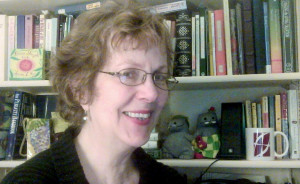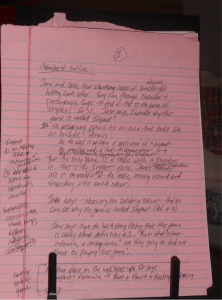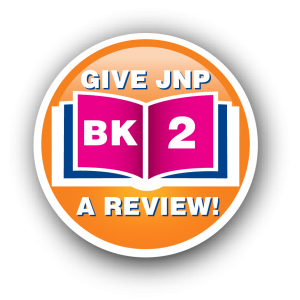KATHY SZAJ | JUDY BARTKOWIAK | JIM WESTCOTT | Writer’s Corner

In the Beginning…
I remember the exact moment clearly. My eyes grew big with wonder, and my mouth stretched into an enormous grin.
But that only skims the surface of what I felt that day one year ago (April 9, 2013) when I first read about Dona’s JNP Project. Soaking in each word on the original Jane Not Plain website, my breathing quickened in recognition and resonance, not just with the concept of self-esteem for children. What grabbed me then (and still thrills me) is that the JNP spotlight on self-esteem is built on eliciting kids’ inner character strengths—values, beliefs, emotions—and, let’s call it, their “inner portfolio” of skills, talents, and passions.
Here’s the glitch. We live in a world of constant distraction and information overload. How can we show children this incredibly important self-esteem/inner character perspective and pathway—without lecturing or sermonizing? Ah, yes! Through stories, of course!
I readily confess. I am blatantly nuts about all things story that make me sigh, cry, or laugh (or all three). For me, writing about Jane, Jake, and magical Oracle in Jane & Jake’s Adventures to Awesome meshes delightfully with many decades of work as an educator and writer. Exploring the immense, awesome power of narrative—to imagine, invoke, and invite the best we can be—has been a source of life-time joy. Saying “yes” to working with Dona, our Creative Writing Team, and Dona’s network of child development experts was easy.
I am grateful, and yes, one year later, I am still smiling.
BOOK 1: TRUTH — Jane & Jake’s Adventures to Awesome Truth
Many years ago, when I taught high school religious studies, I managed to squeeze in some mythology as part of introducing my students to spiritual literature. Myth, my students decided (and as most American adults seem to believe), is a lie. After all, this dude named Daedalus never really made wings of wax and fell into the ocean after (stupidly) flying too close to the sun. Since that event never factually happened, they reasoned, the story must be a lie. So why bother reading myths?
I remember the look on their faces when I asked them to consider that myths—like all stories—tell the truth that goes beyond the facts. (Insert here looks of disbelief on a class of high school sophomore faces.) Especially, I said, when the truth is so much bigger than facts. For instance, when we tell someone—from our hearts—that we love them: is that a fact? Is it provable? Is it true?
Big truths—such as forgiving, feeling compassion for, and loving ourselves and others—are much bigger than mere facts. And that’s why we need to tell and be told stories about these big truths. Stories such as Jake & Jane’s Adventures to Awesome Truth.
When our creative team began our initial session to brainstorm our ideas about truth, we knew that children—especially very young kids—mostly understood truth as verifiable fact. Our team talked about how we could expand that on/off-switch notion of truth in a way that kids could readily absorb. For instance, many (kids and adults) believe that real friends do not lie to us. Yet in our story Jake does lie—twice—to Jane. Does that mean he is not really her friend? Jane reaches that exact conclusion—which hurts her terribly.
Can a friend tell lies and still be a friend? Yes—if we can understand that our friends (as well as ourselves) sometimes make mistakes such as telling lies, and yes, if we are willing to listen to the reasons that people sometimes lie.
If real truth is about growing our relationships—trusting that we will help each other grow, through “thick and thin”—then lying certainly punctures that growth, that trust, that relationship. But it’s a fact: true-blue friends sometimes lie to each other. That’s when it’s time to choose a story that reminds us that real truth goes beyond such facts.
BOOK 2: KINDNESS — Jane & Jake’s Adventures to Awesome Kindness
“Be kind,” we adults tell the children we raise, take care of, and teach. Be kind. But what exactly does that mean? What does kindness sound like…look like…feel like? What words do we say when we’re kind? What actions are we doing?
A few years ago, I discovered from an eight-year-old friend that “be kind”—which she had certainly been told by her parents—seemed to vaguely mean “be nice.”
Being nice and being kind are certainly important to be and do. Yet, my little friend was astonished to learn that certain words she had carelessly tossed off to a classmate were neither nice nor kind. Actually, they were unmistakably unkind.
What a wake-up call for me! I suddenly understood that the words adults use to admonish children to be virtuous—kind, forgiving, compassionate, etc.—must sound to kids like the blah-blah noise that the Charlie Brown and his friends hear from the faceless grown-ups in the Peanuts cartoons. Our creative team knew that we would need to make sure that Jane and Jake’s journey to Awesome Kindness took them beyond the vague blah-blah of being nice. Jane and Jake would need to experience firsthand how kindness looks, sounds, and feels.
Jane’s encounters with Mia—an older, popular girl at school who is mean to Jane “for no reason”—are clear examples of a lack of kindness. Jane’s protests of the unfairness of being Mia’s target are justified. Who wants to be the recipient of someone else’s unkindness?
And yet…a gift for both Jane and Jake hides within that unkindness.
Often people “sting” others when they are feeling, as Jane’s goldfish says, “sad, bad, or mad.” Through the challenge of recovering the “stinger” of a sea jelly (jellyfish) in the undersea world of Awesome, Jane and Jake receive a unique gift: the experience of learning that being kind means responding to what someone else—including “Mean Mia”—truly wants, not what we think they need.
I hope our readers—and the grown-ups who love them—find, unwrap, and share this kindness gift as they follow Jane and Jake into Awesome Kindness.
Perhaps it’s time to leave the vague being-nice blah-blah to the Peanuts gang.
BOOK 3: HARMONY — Jane & Jake’s Adventures to Awesome Harmony
It’s a well-known fact that at some point writers must sit their tushes in a chair for prolonged periods of time and put pen to paper and/or fingers to keyboard. Writers must focus intensely while paradoxically being open to catch a stream of words and ideas. Writers must develop a discipline of dedicated times and places to write.
Right.
Not that these are not true. But life may have other ideas.
During the months of working with my creative team partners on Book 3: Harmony, I have: 1) moved temporarily from New York City to my sister’s home in northeast Arkansas; 2) watched my laptop—my one-and-only computer at the time—die a slow death; 3) spent two days being invaded by hundreds (no exaggeration) of bugs that were flying in my room and crashing into my replacement computer; and 4) spent five days in a hospital when persistent pain suddenly required a visit to a hospital emergency room.
Let’s say that these events were not exactly in harmony with maintaining this writer’s focus, catching a stream of words and ideas, or putting fingers to keyboard. And yet…the magic—of taking bare-bones ideas, glimpses of possibilities, sketches of storyline, and characters who are growing before our very eyes—worked. Again. Awesome!
Life decided that the labor of giving birth to Book 3: Jane & Jake’s Adventures to Awesome Harmony would take far longer than planned or desired. But luckily, when creatives know that they are “midwifing” something that wants to be born, we can coach each other to keep breathing and trust in the outcome.
BOOK 4: FORGIVENESS — Jane & Jake’s Adventures to Awesome Forgiveness
Finding Pink
 You’ve probably heard stories about writers who declare that they need a certain pen or pencil to write, or that they must perform a certain action (or set of actions) before writing, or that they must put pen to paper or fingers to keyboard at a certain time. The varieties of writer quirkiness are legendary.
You’ve probably heard stories about writers who declare that they need a certain pen or pencil to write, or that they must perform a certain action (or set of actions) before writing, or that they must put pen to paper or fingers to keyboard at a certain time. The varieties of writer quirkiness are legendary.
Okay, maybe my search for a certain kind of pink paper means I’m quirky too. But I prefer to say that I’m simply sustaining my sanity.
I often simultaneously work in several different subject or project areas, and, for a variety of reasons, I still hand-write almost all longer first drafts. Using standard, white, lined paper and notebooks for everything produces big trouble. A chaotic confusion of projects, notes, research, and drafts spills out everywhere. Color coding—including the lined “loose leaf” paper I use for drafts—is my sanity-saving visual solution.
How did JNP writing become a “pink-paper project” for me? Sure, our main character, Jane, is a girl. And, yes, despite some progress in color association and gender, pink is still often linked to girls.
 But JNP is my “pink-paper project” for a much, let’s say, healthier reason. “Being in the pink” is an expression about experiencing good health and positive well-being—inside and out. What a perfect match to JNP! At JNP, we’re all about discovering, growing, and trusting our healthy “inner awesome”—in Jane and all our characters, in our readers…and in us, the story creators.
But JNP is my “pink-paper project” for a much, let’s say, healthier reason. “Being in the pink” is an expression about experiencing good health and positive well-being—inside and out. What a perfect match to JNP! At JNP, we’re all about discovering, growing, and trusting our healthy “inner awesome”—in Jane and all our characters, in our readers…and in us, the story creators.
I’m the lead writer of the JNP books, which means doing numerous “pink-paper activities.” I “catch” and organize emerging new ideas; structure chapters; and capture the voices of Jane, Jake, Oracle, and other characters in dialogue—all done on pink paper. A small mountain of pink paper with handwritten notes and drafts of Book 4: Jane & Jake’s Adventures to Awesome Forgiveness currently overflows on my desk and writing table and commands my upright typing stand (see pictures). A small, spiral-bound notebook of (what else?) pink paper parks in front of my computer, ready for our next collaborative Skype creative team meeting.
But filling pink page after pink page has evolved beyond staying organized. I’m also visually nudged to remember how important it is that all of us, characters and creators alike, are staying “in the pink.”
As for that certain pink paper, locating lined 8½” x 11” pink paper that is heavy enough to write on both sides (to conserve paper and trees) without ink bleed-through continues to be a challenge. (Most pink, lined paper that comes in tablets is too thin.) I did find and purchase from an online source the ideal heavyweight pink loose leaf paper, but my supply is dwindling and, alas, buying this in great quantities becomes expensive.
Never mind. I refuse to be blue, and my skies will not turn gray. I’m staying happily quirky as I think (and find) pink!
* * * * * * *
Note: Pink is also the color of the Pearl of Awesome Kindness that is featured in Book 2: Jane & Jake’s Adventure in Awesome Kindness.



